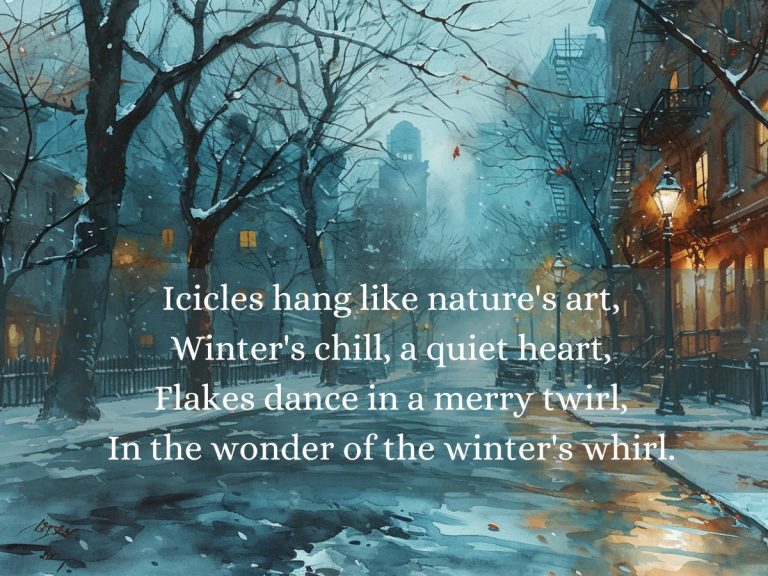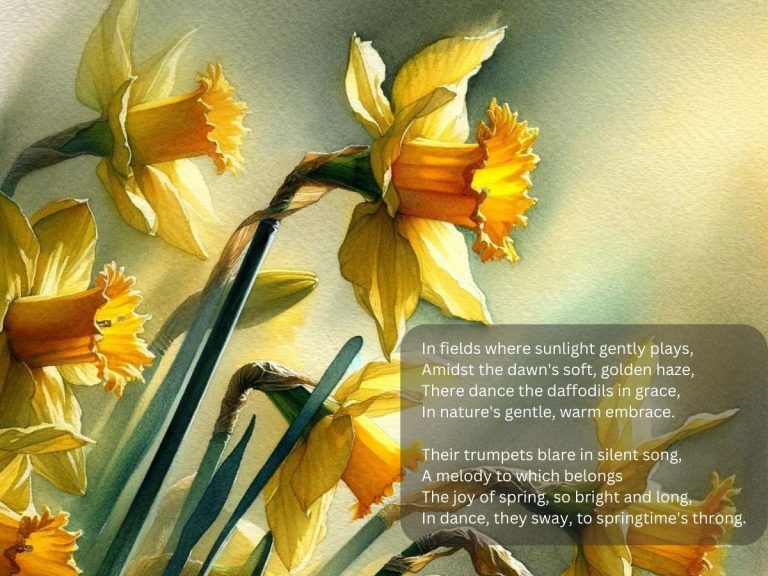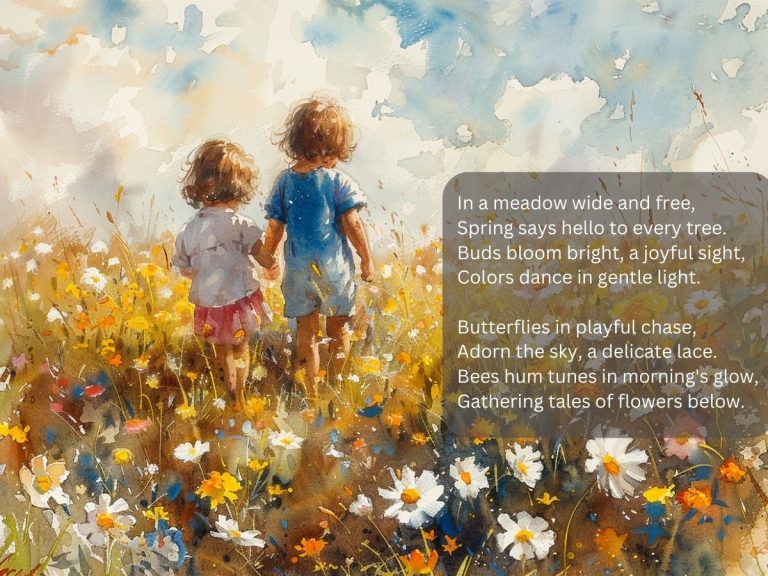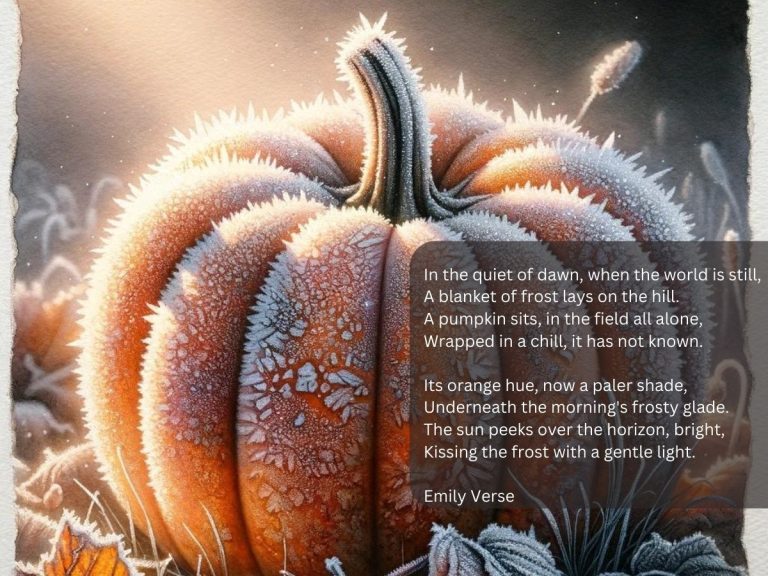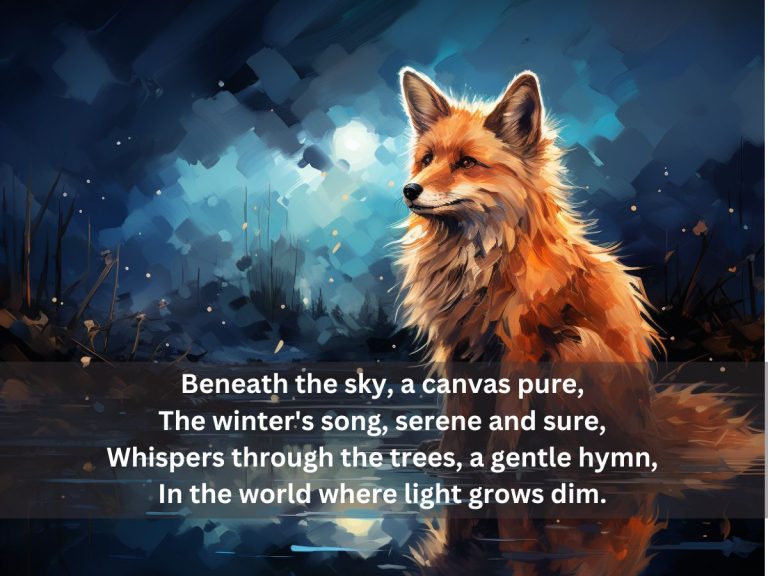10 Spring Haiku Poems 5 7 5
Table of Contents
Spring’s Gentle Whisper
Spring's gentle whisper,
Blooms dancing in soft sunlight,
Nature's heart reborn.
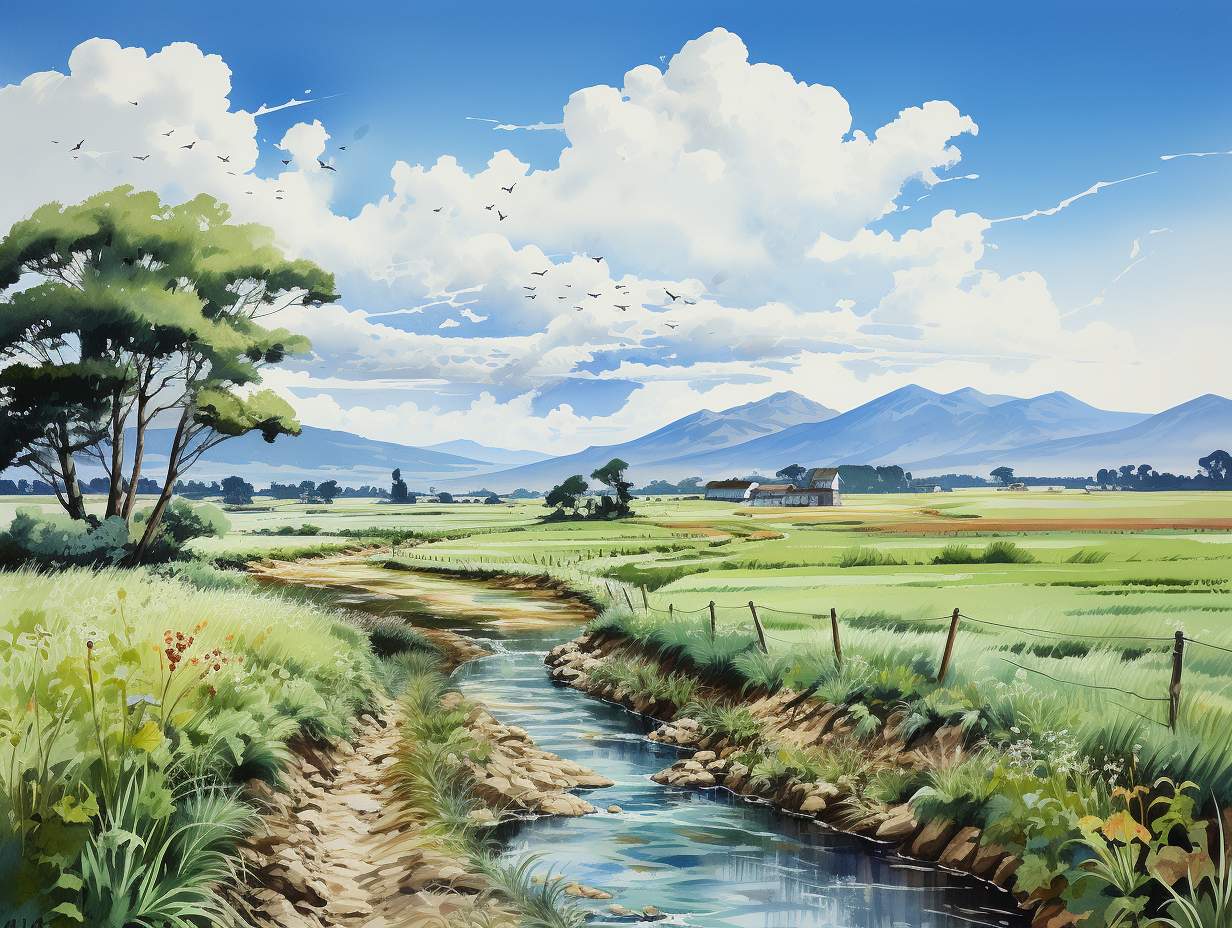
Summary
This haiku captures the essence of spring, a season of renewal and rebirth. The first line introduces spring as a soft, subtle presence, much like a whisper. The second line paints a vivid picture of flowers blooming, swaying gently under the warm sunlight, symbolizing growth and beauty. The final line encapsulates the rejuvenation of nature, suggesting a rebirth that touches every aspect of the natural world.
Inspirations Behind
As I penned this haiku, I envisioned a tranquil garden in early spring, where the first blooms of the season gently unfurl under a warm sun. The serenity and delicate beauty of this scene inspired me. The concept of nature awakening from its winter slumber, portrayed through the metaphor of a ‘gentle whisper,’ resonated with me deeply. This poem is a tribute to the quiet yet profound transformation that spring brings to the world.
Here is a recitation of the Haiku.
Whispers of Springtime
Meadow's breath in bloom,
Whispers of springtime's caress,
Life's canvas renewed.
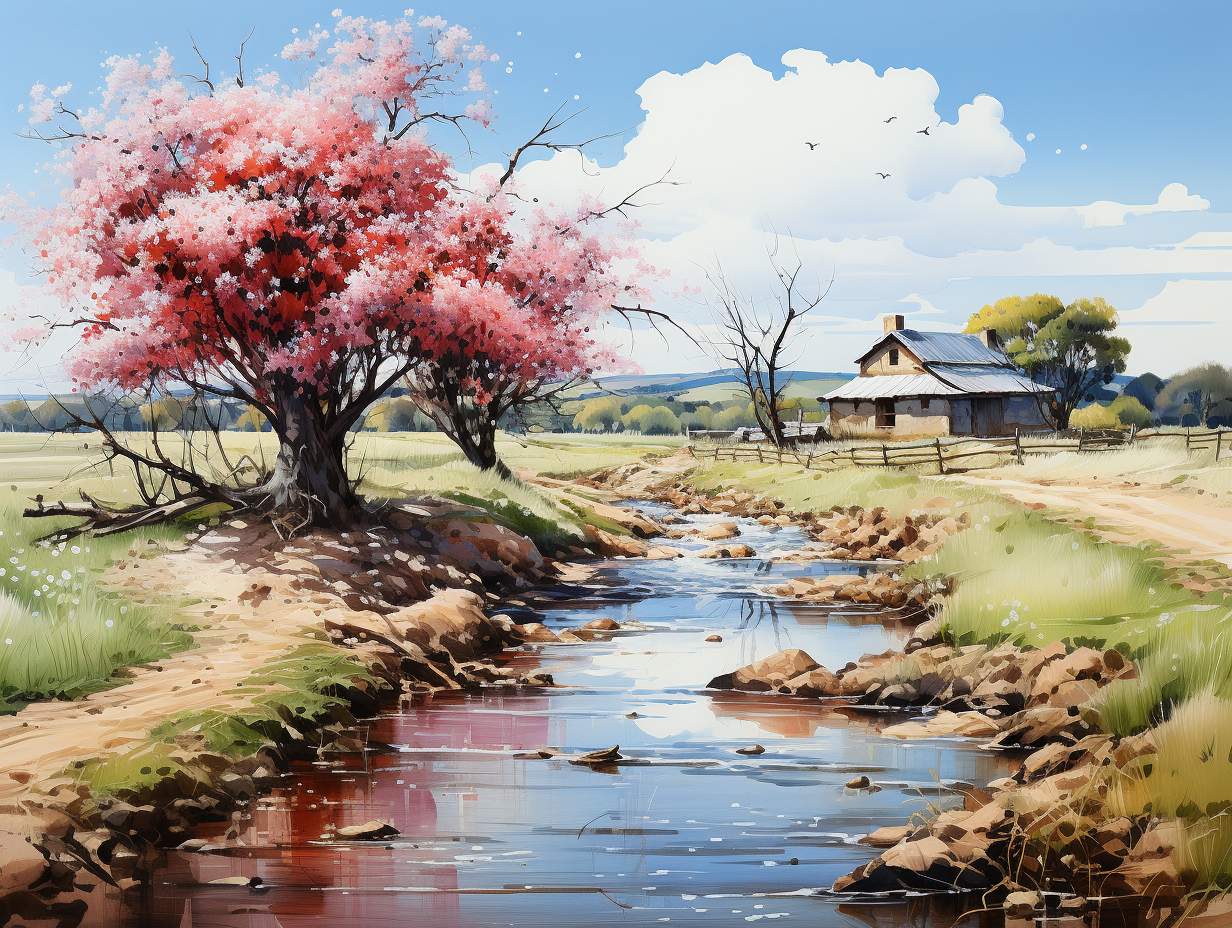
Summary
This haiku encapsulates the enchanting aura of spring as it breathes life into meadows. The first line introduces the meadow as a living entity, awakening with the bloom of flowers. The second line personifies springtime as a gentle force, tenderly caressing the landscape. The final line speaks of renewal, likening the revival of nature to an artist revitalizing a canvas. This poem celebrates the rejuvenation and vibrant transformation that spring brings to the natural world.
Inspirations Behind
While writing this haiku, I imagined myself standing in the midst of a blossoming meadow, feeling the soft touch of spring’s breeze. The sight of flowers coming to life and the sensory experience of the meadow’s transformation inspired me deeply. This haiku is a reflection of the profound connection one feels with nature during spring, where every element seems to whisper the promise of new beginnings and vibrant life.
Dawn’s Spring Symphony
Dawn's chorus unfolds,
Spring's symphony in bloom,
Nature's song, untold.

Summary
This haiku reflects the enchanting melody of nature as it welcomes spring. The first line introduces the dawn chorus, a metaphor for the beginning of a new day and the awakening of nature. The second line describes spring as a symphony, with each element in bloom contributing to a harmonious composition. The final line suggests the uniqueness and wonder of nature’s song during spring, a melody that is always fresh and new. This poem celebrates the auditory beauty of spring, as much as its visual splendor.
Inspirations Behind
While crafting this haiku, I envisioned the early hours of a spring morning, filled with the sounds of birds chirping and the rustling of leaves. The idea of dawn’s chorus leading into a full symphony as the day progresses struck me as a beautiful metaphor for the gradual awakening of the natural world. This haiku is a tribute to the often-overlooked auditory beauty of spring, a season that not only transforms the landscape visually but also fills the air with its unique and mesmerizing sounds.
Spring’s First Blush
Morning dew glistens,
In spring's first tender blush,
New life awakens.
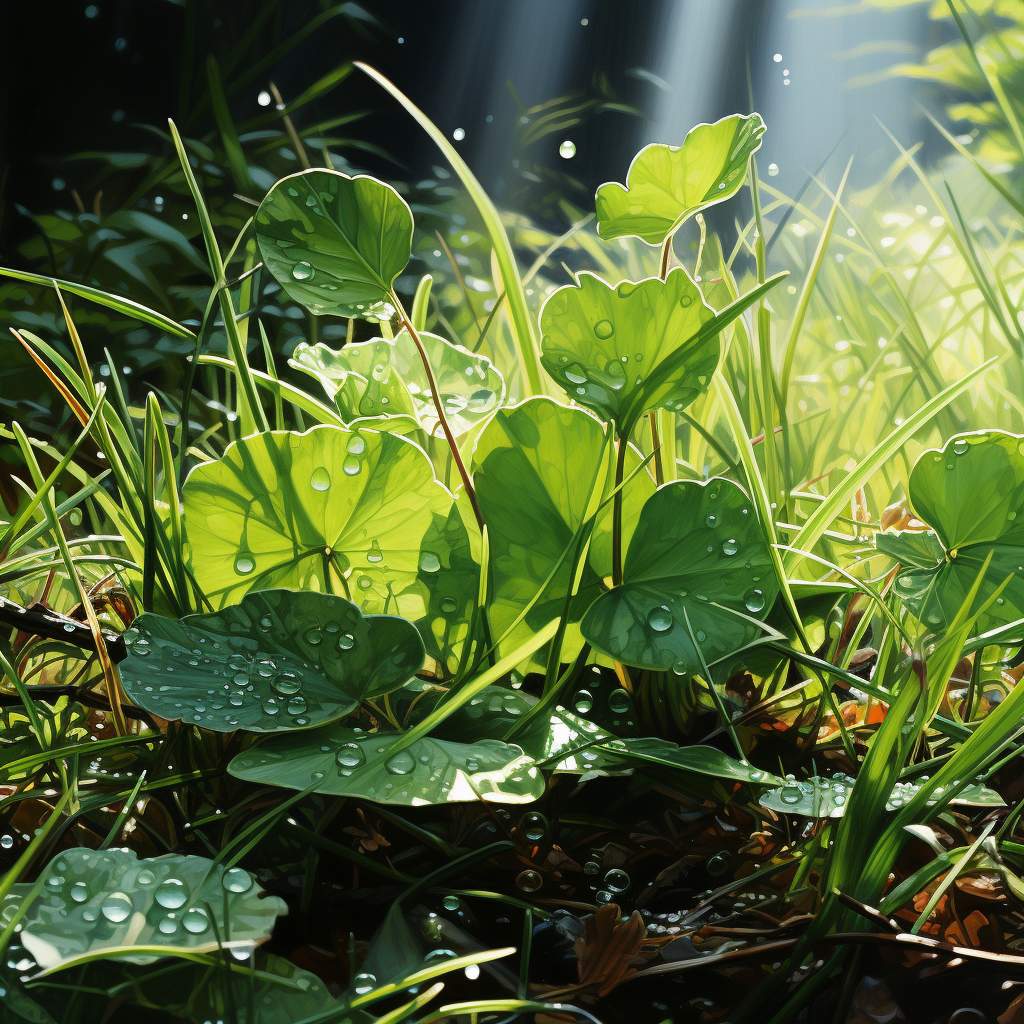
Summary
This haiku captures the delicate beauty of early spring. The first line paints a picture of morning dew, sparkling like jewels in the early light. The second line introduces the idea of spring’s first blush, a metaphor for the initial moments of the season, tender and full of promise. The final line speaks of the awakening of new life, a theme central to spring, symbolizing renewal and growth. The poem encapsulates the freshness and purity of spring, inviting reflection on the wonders of nature’s rebirth.
Inspirations Behind
While composing this haiku, I envisioned a pristine spring morning, with the first rays of sunlight illuminating dewdrops on fresh greenery. The concept of ‘spring’s first blush’ came to me as a perfect representation of the season’s initial, gentle arrival. This poem is my ode to those first moments of spring, where every element of nature seems to awaken with a renewed sense of purpose and beauty.
Spring’s Quiet Echo
Soft rain on petals,
Spring's quiet echo murmurs,
Life stirs in whispers.
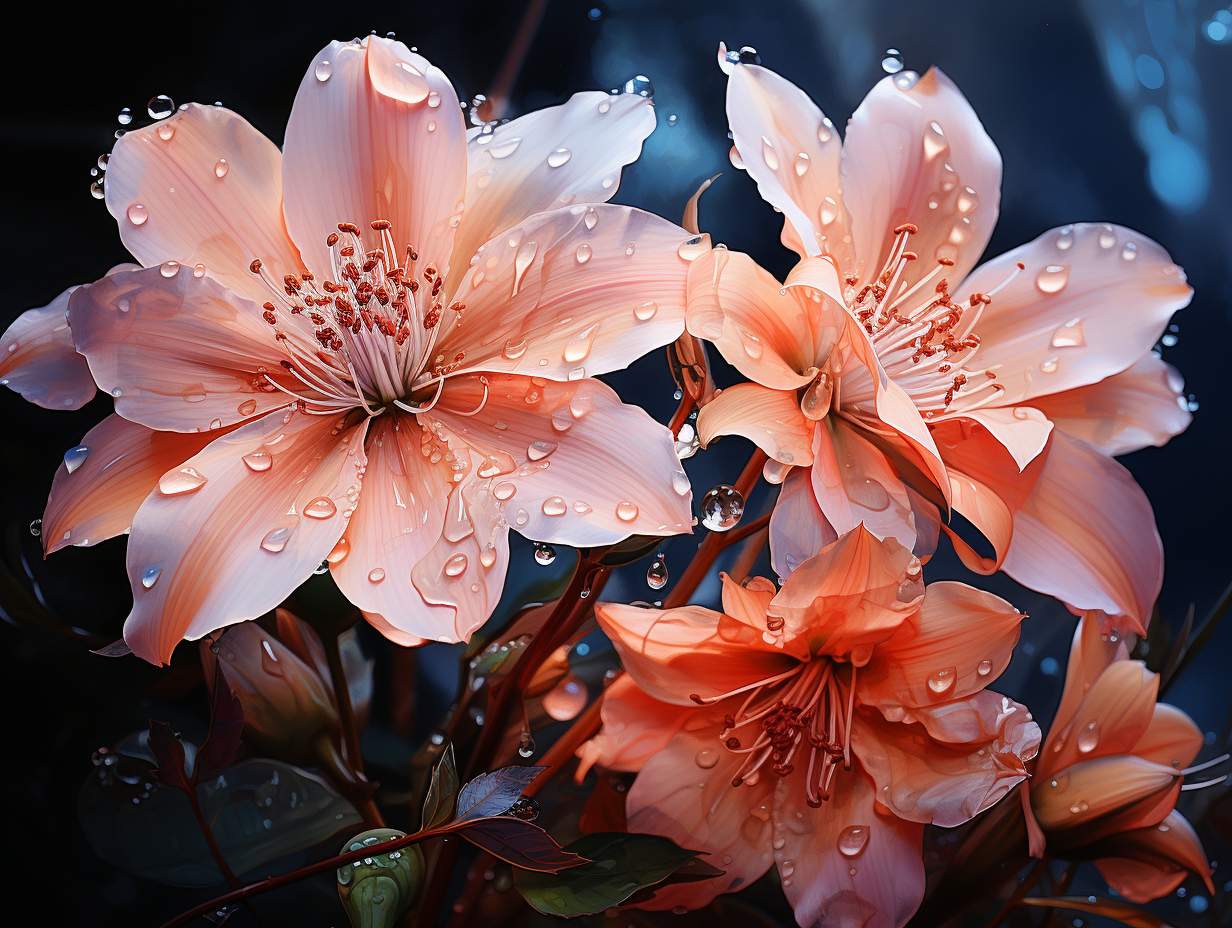
Summary
This haiku embodies the subtle and gentle aspects of spring. The first line introduces the image of soft rain falling on flower petals, a symbol of nature’s nurturing touch. The second line, “Spring’s quiet echo murmurs,” suggests a low, continuous sound that resonates with the season’s arrival, like a background hum of life reawakening. The final line, “Life stirs in whispers,” captures the idea of life reemerging in a subtle, almost secretive manner. The poem paints a picture of spring not as a bold announcement, but as a soft, gradual reawakening of the world.
Inspirations Behind
As I crafted this haiku, I imagined a gentle spring rain, the kind that falls quietly but persistently, bringing life to everything it touches. The concept of spring as a quiet echo, rather than a loud declaration, struck me as a profound metaphor. It’s about the understated beauty of spring, the way it slowly unfolds and quietly brings the world back to life. This haiku is a tribute to those unassuming moments of spring that might go unnoticed but are filled with immense beauty and significance.
Breeze Through Cherry Blooms
Cherry blossoms sway,
Breeze whispers through pink cascades,
Spring dances in air.
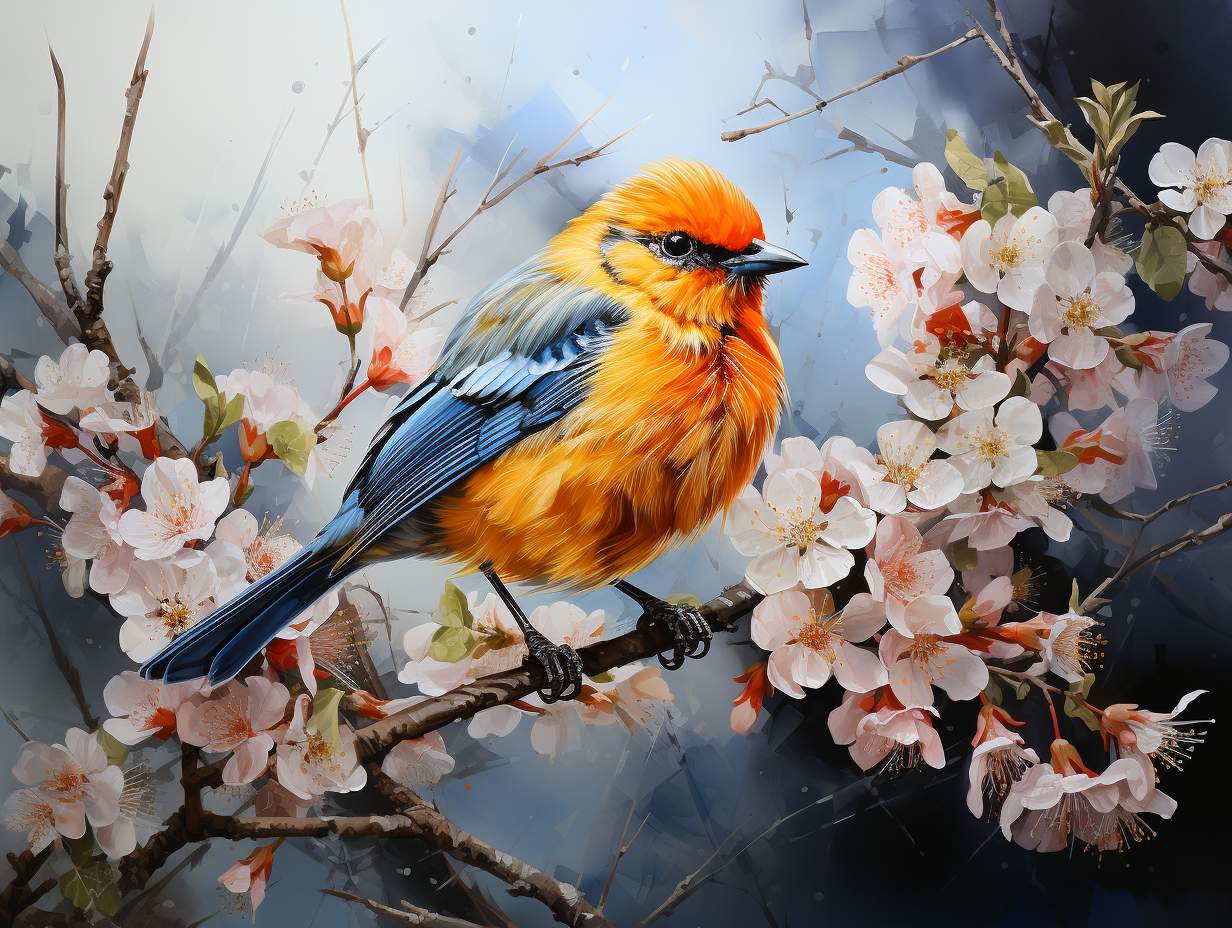
Summary
This haiku celebrates the iconic beauty of cherry blossoms in spring. The first line sets the scene with cherry blossoms gently swaying, a symbol of spring’s delicate beauty. The second line personifies the breeze as it whispers through the blossoms, creating a sensory experience of sight and sound. The final line, “Spring dances in air,” captures the essence of the season as a joyful, vibrant dance of nature. The poem encapsulates the transient beauty of cherry blossoms and the lively spirit of spring.
Inspirations Behind
While composing this haiku, I was inspired by the image of cherry blossoms in full bloom, a quintessential symbol of spring. The way the blossoms sway in the breeze always seemed like a dance to me, a celebration of life and renewal. This poem is my homage to that mesmerizing sight, capturing the fleeting yet profound beauty of cherry blossoms and the joyful essence of spring they embody.
Whispering Willow’s Song
Willow's green tendrils,
Dance in spring's warm, soft embrace,
Nature's song in breeze.
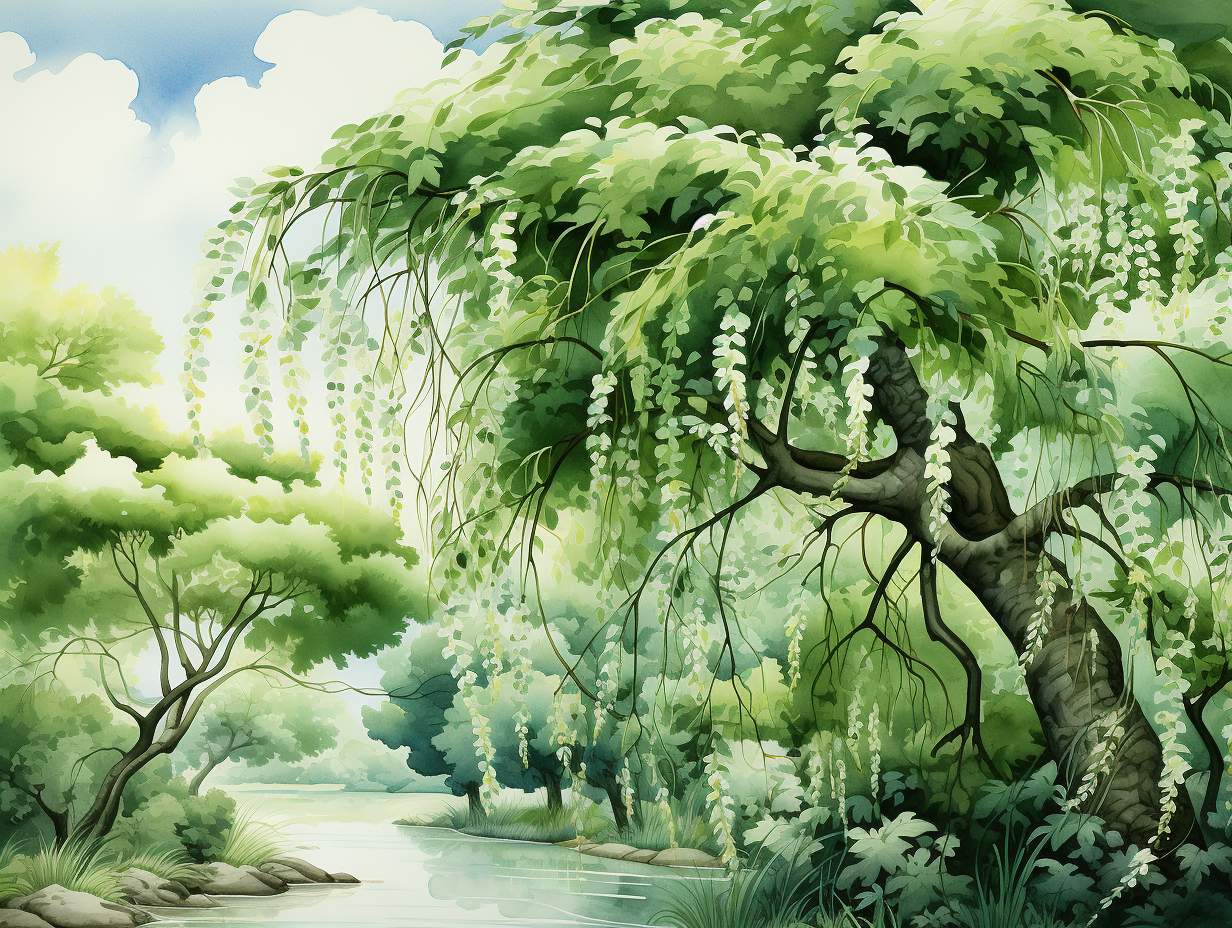
Summary
This haiku paints a picture of a willow tree in the full embrace of spring. The first line, “Willow’s green tendrils,” introduces the graceful branches of the willow, symbolizing growth and flexibility. The second line, “Dance in spring’s warm, soft embrace,” depicts the willow swaying gently in the mild spring air, a dance with nature. The final line, “Nature’s song in breeze,” evokes the idea of nature communicating through the movement of the willow in the breeze, a harmonious and tranquil scene. The poem encapsulates the grace and gentle movement of nature in spring.
Inspirations Behind
As I wrote this haiku, I envisioned a willow tree by a quiet pond, its branches swaying softly in the spring breeze. The willow, with its flowing tendrils, struck me as a natural embodiment of spring’s gentle yet persistent influence. This poem is a reflection of my admiration for the willow’s elegance and the way it dances with the wind, symbolizing nature’s graceful and subtle movements in the welcoming arms of spring.
Spring’s Gentle Awakening
Dawn breaks; birds sing loud,
Cherry blossoms greet the sun,
Spring's gentle awakening.
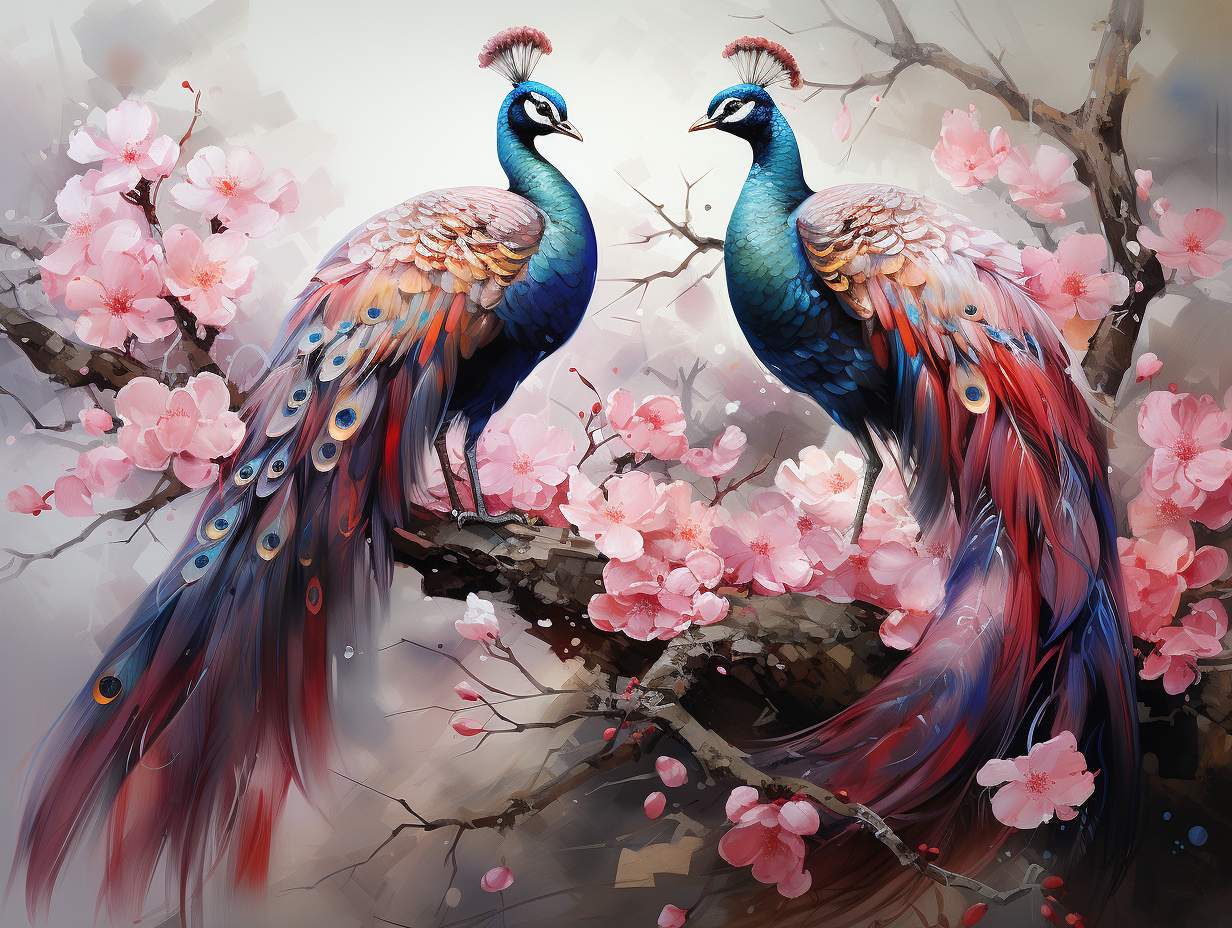
Summary
This haiku embraces the vibrant energy of a spring morning. The first line, “Dawn breaks; birds sing loud,” introduces the start of a new day with the lively chorus of birds. The second line, “Cherry blossoms greet the sun,” paints a picture of cherry trees blooming under the warm sunlight, a classic symbol of spring’s beauty. The final line, “Spring’s gentle awakening,” captures the essence of the season as a time of gentle yet profound renewal and revival. The poem reflects the joyous and colorful spirit of spring, celebrating the transition from the quiet of winter to the liveliness of the new season.
Inspirations Behind
While composing this haiku, I imagined the very first moments of a spring day, witnessing nature come to life with the sunrise. The lively birdsong and the sight of cherry blossoms blooming in the sun’s first rays struck me as the perfect representation of spring’s awakening. This poem is my homage to those first bright moments of the day in spring, where the world seems to burst into life, full of color and sound.
Soft Rain’s Melody
Rain taps on new leaves,
Soft melody of springtime,
Nature's lullaby.
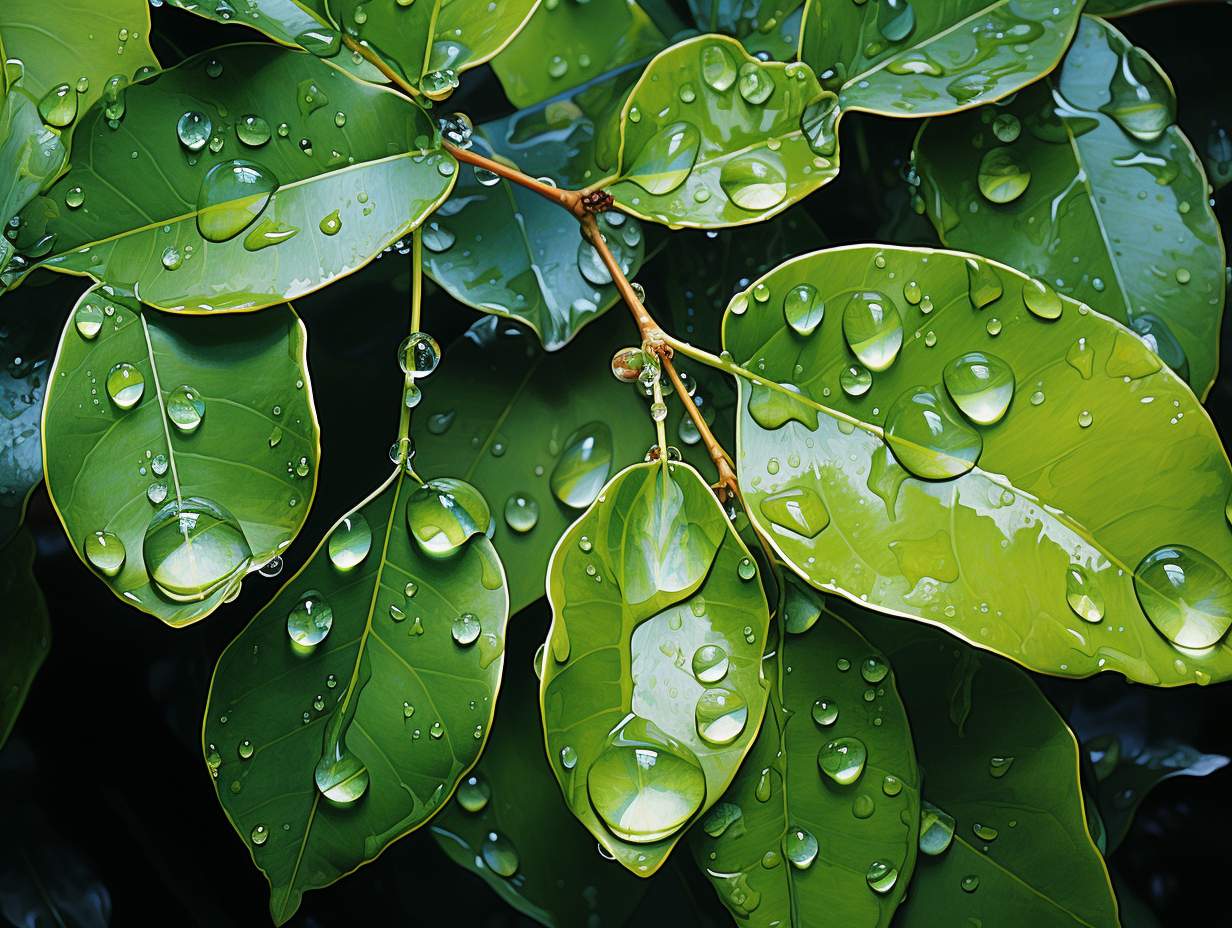
Summary
This haiku captures the soothing essence of a spring rain. The first line, “Rain taps on new leaves,” introduces the gentle sound of raindrops touching the freshly sprouted leaves. The second line, “Soft melody of springtime,” describes this sound as a peaceful melody, a signature tune of the season. The final line, “Nature’s lullaby,” suggests the calming and nurturing effect of this melody, like a lullaby sung by nature itself. The poem evokes a sense of tranquility and comfort, celebrating the gentle, nurturing aspects of spring rains.
Inspirations Behind
While writing this haiku, I was inspired by the calming sound of a light spring rain. The rhythmic tapping of raindrops on leaves and the earth always felt like a song to me, a natural melody that brings a sense of peace and renewal. This poem is a reflection of my appreciation for these quiet moments in spring, where the rain seems to sing a lullaby, inviting the world to pause and listen.
Morning Dew’s Caress
Dew on spider's web,
Glistening in morning light,
Spring's delicate lace.
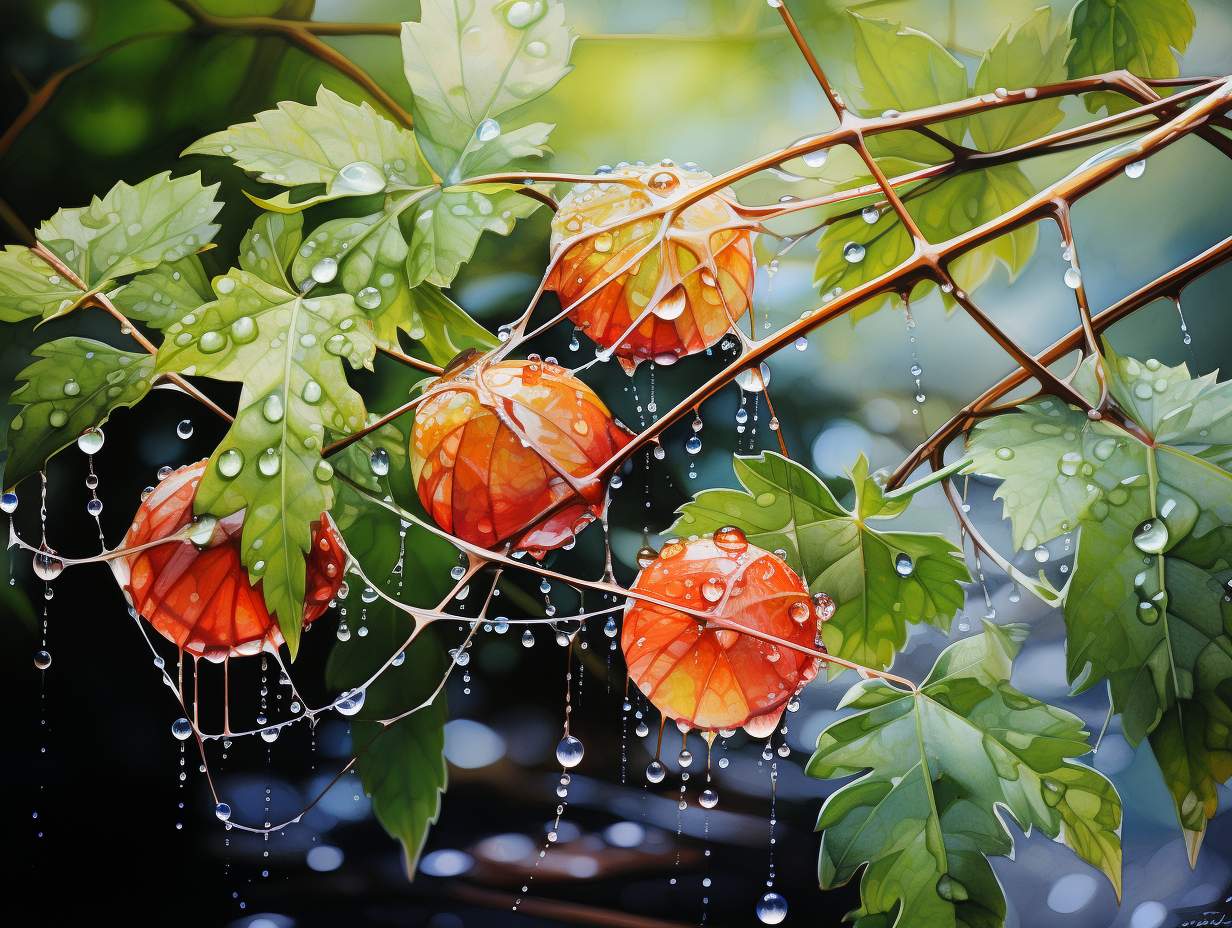
Here are the recitations of the last 5 haikus.
Fore more voice renditions, you can follow Literaturevaults.
Summary
This haiku captures the intricate beauty of a spider’s web adorned with morning dew in spring. The first line, “Dew on spider’s web,” introduces the image of dewdrops delicately placed on the web, a natural masterpiece. The second line, “Glistening in morning light,” paints a picture of these dewdrops shining like tiny jewels as the first rays of sunlight touch them. The final line, “Spring’s delicate lace,” likens the dew-covered web to fine lace, emphasizing the elegance and fragility of this springtime scene. The poem celebrates the small, often unnoticed wonders of nature, highlighting the exquisite beauty found in the details of the natural world.
Inspirations Behind
As I composed this haiku, I was inspired by the sight of a spider’s web covered in dewdrops on a spring morning. The way the dew clings to the delicate strands, creating a shimmering network, always struck me as a breathtaking example of nature’s artistry. This poem is a tribute to those ephemeral moments of beauty in nature, where the simplest things, like a dew-laden web, become symbols of the intricate and delicate balance of the natural world.
End Words
In conclusion, each of these spring haiku poems 5 7 5, crafted in the traditional 5-7-5 syllable structure, captures the essence of spring in a unique and profound way. From the gentle whisper of blooming flowers to the tranquil dance of willow trees, and the sparkling dew on spider webs at dawn, these haikus collectively paint a vivid tapestry of the season’s beauty. The recurring themes of renewal, tranquility, and nature’s subtle yet powerful transformations are woven seamlessly throughout. The imagery invoked in these “spring haiku poems 5 7 5” not only celebrates the sensory richness of spring but also invites reflection on the quiet, often unnoticed moments that hold immense beauty and significance. Each poem, in its brevity, encapsulates a distinct facet of spring, offering a window into the season’s soul – a soul that sings with the promise of new beginnings and the quiet joy of nature’s perennial rebirth.

